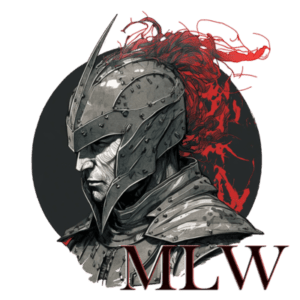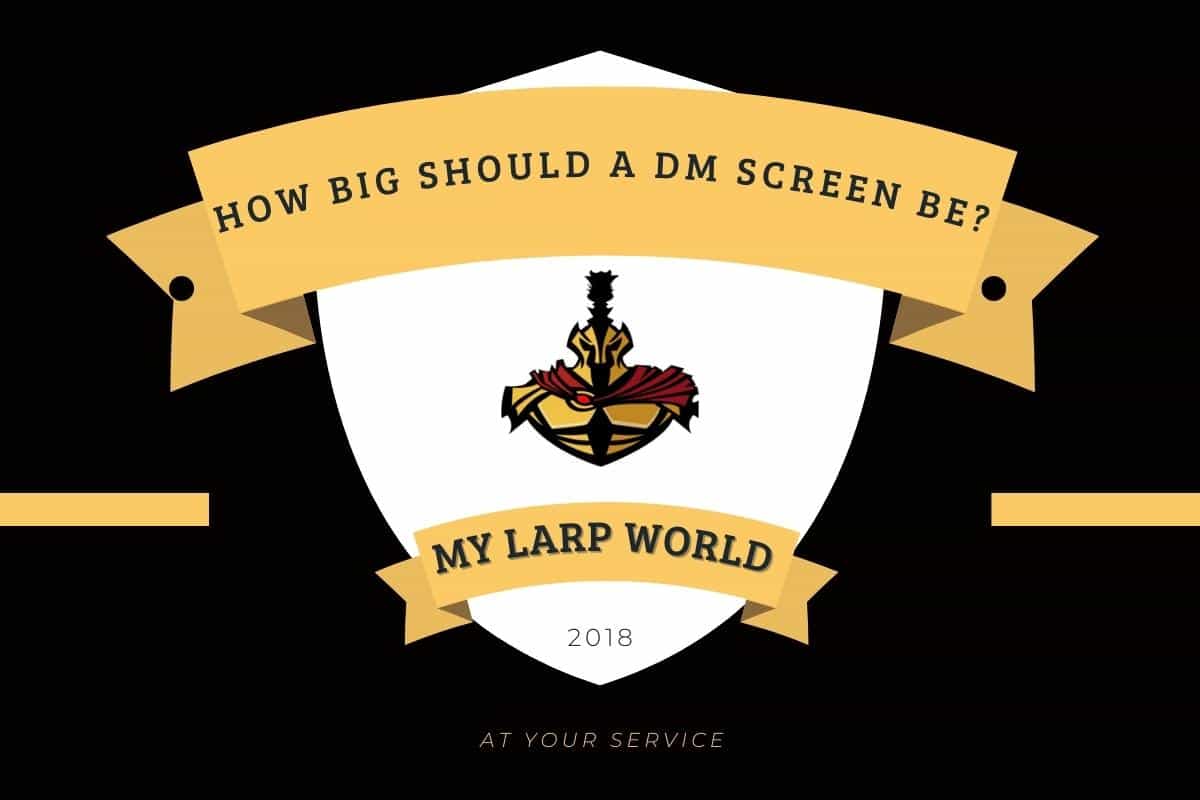Since you’re here, I’m sure you’ve played DnD or any other RPG, or are about to start playing. Perhaps you’ve been asked to DM an upcoming session or an entire campaign, and you’re starting to overthink the details because you want to be as prepared as possible.
You’ve even started thinking about the size of the DM screen. Rightfully so, because size does matter, regardless of what they say. With that said, bigger isn’t necessarily better.
The average DM screen is 10-12″ tall and 30-34″ wide and often consists of 3-4 panels. The optimal size varies depending on how much information is kept on it, how close the players are sitting, how much the DM has to see beyond the screen, and how much there is to hide from the players.
Some choose to build their own DM screens to fit specific campaigns while others use one screen for every campaign seamlessly. For our campaigns, we’ve been using customizable screens like this one.
Part of picking the right DM screen is understanding your needs as a dungeon master. We’ll walk you through everything you need to know to find the right screen.
How Tall Should a DM Screen Be?
Dungeon masters have a thin screen separating everything they’ve planned for the campaign from the players who are in the middle of exploring it.
This thin sheet gives the dungeon master his or her own space to think, plan, and execute. Without the screen, most DMs would feel exposed.
However, there’s a bit of balance needed to find the right size. You want to create your own quarter without hiding yourself from the gameplay. You need to witness what’s going on without exposing your own plans.
This is where the height of the DM’s screen comes in. The average height of a game or dungeon master’s screen is about 10″ but some are no taller than 5″ while others stretch up to about 13″.
There’s nothing restricting a dungeon master from mounting a tall or short screen – but there are benefits to having a suitable screen. Preferably somewhere around 10-12″ tall if you ask me.
Sitting behind a skyscraper-like screen will make it difficult for you, as a dungeon master, to keep an eye on the game and the players. I think 13-15″ is a bit too tall for my taste.
So, while it comes down to personal preference, I advise you to get a screen that goes up to your chest when it’s placed on the table and you’re sitting down.
How Wide Should a DM Screen Be?
Just like the screen’s height, the width is also an important element. The need for a wider screen often comes when your sessions involve a lot of players or when your gaming space is a bit limited.
Sounds a bit contradictory, doesn’t it? There’s good reasoning for that.
The more players you have, the more information must be kept behind the screen by the game master. Secondly, with a crowded room, chances are some of your players can catch a glimpse of what’s going on behind the curtains because they’ll be sitting close to you.
The average DM screen is about 30″ wide. They’re usually made of 3-4 panels. Some screens come with 4 equally wide panels while others have 1 large panel in the middle and 2 smaller panels on each side.
I recommend purchasing or making a 3-4 panel screen that can fold. That way you can adjust the width of the screen accordingly by simply folding in one of the panels, which should reduce the width of the screen by 5-10″.
How Do You Make a DM Screen?
Creating your own screen isn’t difficult. Designing it to look awesome can be a more daunting task if you’re not the artistic type. But don’t fret, the screen itself can be done with no prior experience.
During the years we’ve both purchased and made our own screens. They can be made using a bunch of different materials. The screen itself can be made of wood, cardboard, and paper.
The more complex you want your screen to be, the more you’ll have to add to it. The most simple version of a homemade DM screen can be made with tape and cardboard.
- Cut out 3-4 pieces of cardboard. Think about the measurements we talked about earlier. If you’re cutting out 3 pieces, make each piece about 10-12″ wide and 10″ tall.
- Connect each panel to the next using tape. The sturdier the tape the better the panels will stay connected.
- Place clippers on the top side of each panel and attach your sheets to the clippers.
What Should Be Kept On a DM Screen?
The dungeon master’s screen is more than just a screen separating the narrator from the rest of the party. It’s where the dungeon master keeps track of nearly everything that has to do with the campaign.
While it comes down to the dungeon master’s personal preference, the most common things that you’ll find on a DM’s screen include the following.
1. Player Characters
The screen is a perfect place to keep lists of players’ character names, their classes, important background information, stats, etc.
Also, including the players’ character’s passive perceptions on your DM screen will simplify your life as the story progresses.
2. Names of NPCs, Places, Groups, etc.
The game will develop and more characters, places, and interactions will be presented to the players. Keeping a sheet of names on your DM screen is going to make it much easier for you to find inspiration in the heat of the moment.
Here are the type of names I keep on my DM screen during a campaign.
- Random Names For NPCs (A couple of names for each race)
- Names of Taverns, Inns, Marketplaces, Regions, and so forth.
- Names of Gangs/Bandits
- Names of In-Game Events / Happenings
- Translations of names (If your world has an ancient language or something along those lines)
3. Prices
If your campaign has a currency, you’ll want to keep a sheet that shows you the price of common items in inns around the world.
You can simply write down a price that you reference when needed and make slight adjustments to that price depending on where and when the item is purchased.
Remember, the price of an item can change from one inn to the next. Supply and demand.
4. Action Difficulties
Keeping a list that shows how difficult each action is to perform is a great way of using your DM screen.
Creating a scale that tells you, as the dungeon master, what the player must roll in order to successfully perform the action is a thousand times easier than doing it in your head on the go.
This is just a handful of things that can be kept on your screen when you’re a dungeon master, but they’re all quite common. But, as we’ve said, it comes down to personal preference in the end.
What’s the Purpose of a DM Screen?
If you aren’t playing online – where you’re separated by a computer monitor, the purpose of the dungeon master’s screen is to create a place for the dungeon master to keep notes, but also a place to find inspiration for the campaign’s development. You can think of it as the dungeon master’s workshop and handbook.
By notes, I mean an extreme amount of information regarding everything related to the campaign. The screen is also there to conceal the dice rolls. Keeping the outcome of the roll secret can create a bit of tension, which you’ll lose if the roll happens in the open.
Many dungeon masters want to create as much tension as possible in moments of immersion. Anti-climactic elements will absolutely reduce the tension, which I believe is an important element.
Your regular DM screen will also put shade on things such as random name generators, status effect lists, tokens, cards, random encounters, figurines, and so forth.
Do You Need a DM Screen?
You don’t need to have a DM screen in order to run or host a successful RPG, but you’ll have to rely heavily on your players not peeking on your notes, as that could potentially expose the entire campaign and ruin the experience for all of you.
Ok, that was a bit hard. No, you don’t need a screen to DM but it’s a very nice bonus that I think has become a staple for good reason. It offers a great bunch of utility both practically but also for immersive reasons, and for the dungeon master’s ability to plan the campaign on the go.
The physical screen as we know it isn’t the only way to display and store information either. You can use a laptop if you don’t mind including digital tools, which I know some people do.

